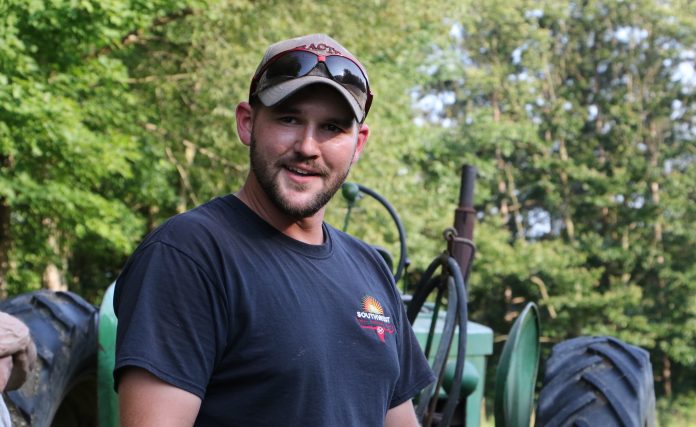
SALEM, Ohio — There is a busy rhythm to Caleb Swope’s routine.
The 28-year-old spends his days as a driver for Southwest Fuels, in Salem, Ohio. His first stop after work is 12 acres of pasture he rents, where he moves his small herd of cattle to new grazing almost daily. Then, he heads a few miles home to his small property, Maple Stone Farm, 12 rolling acres tucked between neighboring houses and a campground, about half of which is pasture. There, he moves his 400 Red Star laying hens, mobile coops and temporary net fencing daily. He also moves a dozen sheep on a five- to six-day rotation.

On Saturdays, he leaves in the early-morning hours to set up for a farmers market at Shaker Square, in Cleveland. There, he markets his eggs and winter squash, as well as bison meat, produce, cut flowers and other products from nearby Heritage Lane Farm, which is owned by his parents, Kevin and Sarah Swope.
The weekends or other free days are for staging his pasture rotations for the next week. It can mean some late nights and long hours. But he’s happy.
From scratch
He’s pragmatic about how he’s gotten his start. It’s not easy to get large acreage as a young farmer. “Land just simply is too expensive to start from scratch,” he said.
He sees opportunity though. Take smaller acreage and make it profitable. While some may find commercial commodity farming rewarding, he wants to focus on taking what he grows right to the consumer.

“A key to a farm this size is marketing,” Caleb told a group of onlookers who had gathered for a pasture walk at his farm in July. He says he saw the property’s potential when it came up for auction in 2015. When he bought it, he told the auctioneer he was going to pay for the place in eggs.
Four years in, he may not have paid for it entirely, but the eggs pay the mortgage. He estimates he’s making around $1,500 a month in egg sales, between on-farm, wholesale and farmers market income. (His off-farm income pays for improvements, at the moment.)
Caleb also sells firewood, in bundles. An old corn bin holds the wood, cut from deadfalls and trees that have been thinned out. The firewood, and eggs, are sold off his farm on the honor system. It’s worked well. A couple of times on both he was shorted one week, but the next, there would be “a whole bunch of money in the box.”
Family affair
His family is close-knit. His grandparents helped with the farm’s down payment. The family works together on farm improvements, and when the cold weather hits, Caleb moves the cattle and sheep to his parents’ to have closer access to hay. When his 3-year-old son, Emmett, helps with chores, his favorite thing is to climb into the coops and collect eggs.

Caleb has Aberdeen Angus cattle in his small herd. He also has an American Milking Devon cow-calf pair. They added them to his herd because his sister, Rebecca, wanted to try her hand at making yogurt. The farmers’ market is a family venture.
Caleb hopes to graze into November, at least. Then, he’ll hunker down for the winter. He works longer hours for Southwest Fuels then anyway. His hens are housed in his barn in the winter, with LED lights to extend daylight and encourage egg laying. He sells off his 2-year-old birds, which halves his flock size.
Caleb’s interest in using poultry came from a project, while studying at Berea College, in Berea, Kentucky. (He majored in agriculture and natural resources.) He ran 100 chickens behind the bison at his parents’ farm to see if they would improve forages. They did. Now, he rotates them through pastures behind the cattle and sheep. Most of the pasture improvements have come from the livestock and poultry rotation.
Future plans
He’d like to be able to devote more time to farming. There are plans to set up a mercantile store at the farm entrance in the future. He has worked at the farmers market in Cleveland for 15 years. He’s seen changes. Now, customers consistently ask about how an animal was raised — they want something grown in a natural environment. And that fits his plans. Small acreage, with a forage focus.
“Basically, the way I’m trying to run my operation is very similar to the way things were done in the farm in the ‘40s and ‘50s,” he said.






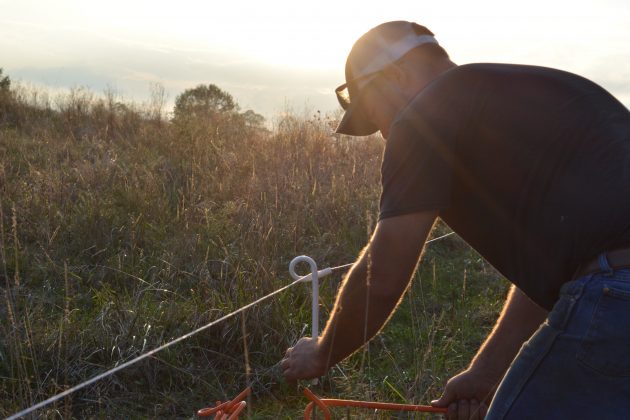
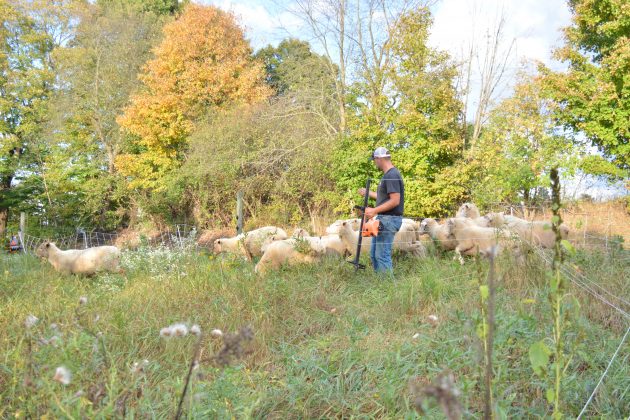
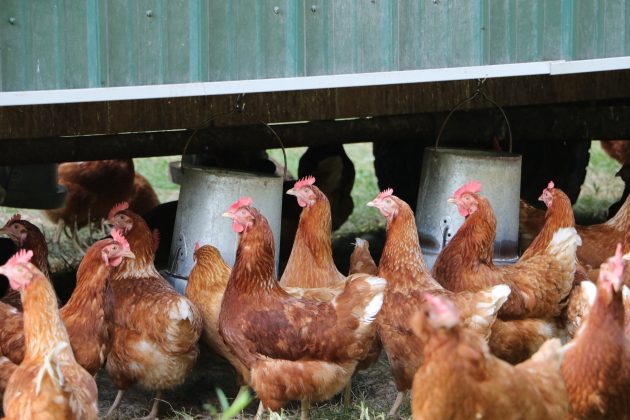
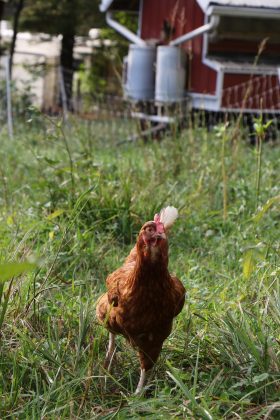
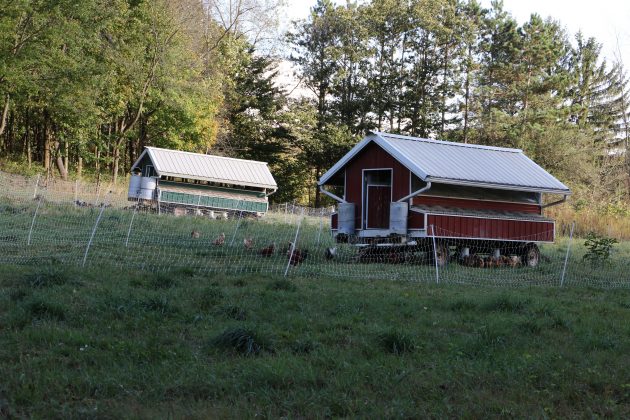
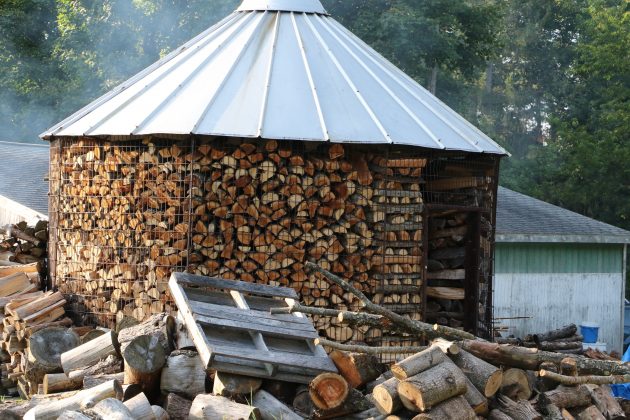
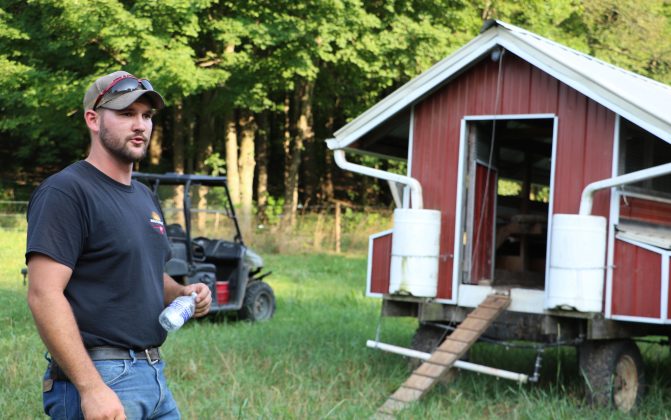
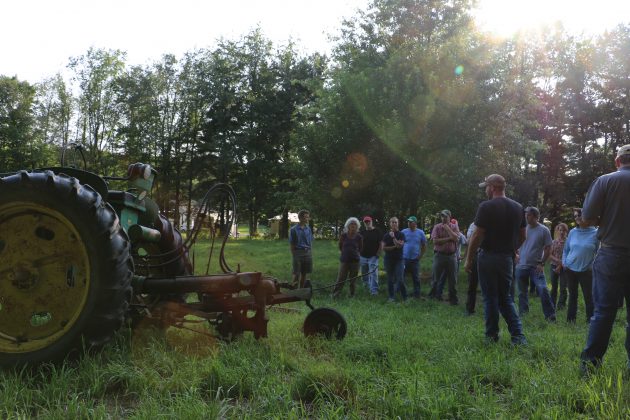




The livestock rotation and setup reminds me of what I’ve read about Joel Salatin at Polyface Farm. Keep up the good work!!